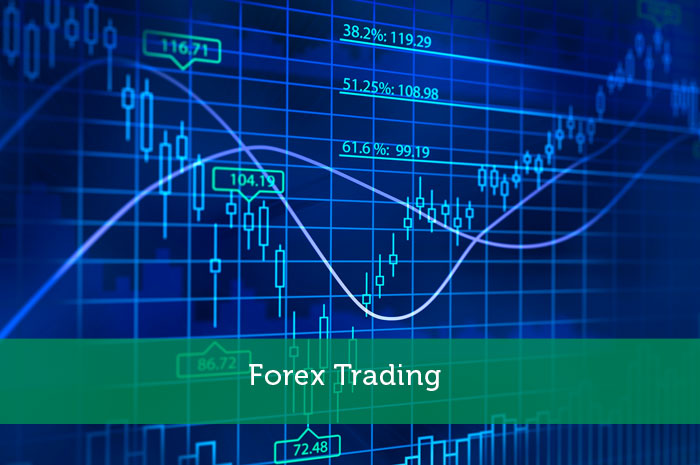Forex trading is an acronym for Foreign Exchange trading and describe the exchange of one currency for another within the global capital markets. Forex trading is the most liquid form of trading as flows are more than 4 trillion dollars a day. Trading begins in Australian on Monday morning and is uninterrupted until the U.S. close on Friday evening.
The most common type of online Forex trading is spot trading which involved the exchange of one countries currency for another 2-business days following a transaction. There are some exceptions which entail tom-next trades which are generally done with robust trading partners such as the U.S. and Canada, as well as forward trades, which are considered any trading time frame beyond 2-trading days.
Forward forex trading uses a second form of exchange rate which is known as the forward rate. Here traders use the interest rate differential between for the time period in question and generate forward points which are either added or subtracted from the spot rate. To do this, traders calculate points be subtracting the value of a short term interest rate in one currency from the short term interest rates in another and then converting that difference into forward points which is a ratio relative to the spot rate of the currency.
Recommended Forex Posts:
The majority of the volume in the currency markets is placed on major currency pairs. These are currency pairs where one of the two currencies traded is the U.S. dollar. The Euro, Yen, Swiss Franc, British Pound, Australian Dollar and Canadian Dollar make up the counter currencies that when joined with the greenback make a major currency pair. The volume is a function of the high levels of liquidity when trading the greenback.
Any other currency is either considered a minor currency or an emerging market currency. When two major currency pairs are joined together but do not include the U.S. dollar, the pair is referred to as a cross currency pair. For example the EUR/JPY is known as a cross currency pair. Many cross currencies have substantial volume especially against the Euro which is the second most liquid and active currency. Emerging market currencies can be very illiquid, and might not provide the liquidity to enter and exit a trade in a timely manner
Forex trading involves determining the future direction of the exchange rate. The job of the traders is to speculate on the future direction using different analysis tools. Some traders use fundamental analysis which is the macro view of the currency pair based on economic data and monetary policy analysis. Other traders will use technical analysis. This is the study of historical price action and using patterns to determine the future direction of an exchange rate based on historical performance. Some technicians use studies such as momentum and stochastics to predict the future direction of the forex market.
The Online Forex trading environment is fast paced, and requires knowledge of how trades are valued. Understanding which currency you are buying and selling and the direction you are speculating on also comes in handy.
Exclusive Bonus: Before investing in forex check out our report on 70+ forex brokers. Find out which brokers you need to avoid. Receive our exclusive report for free today.





